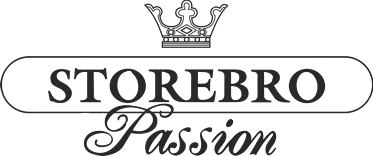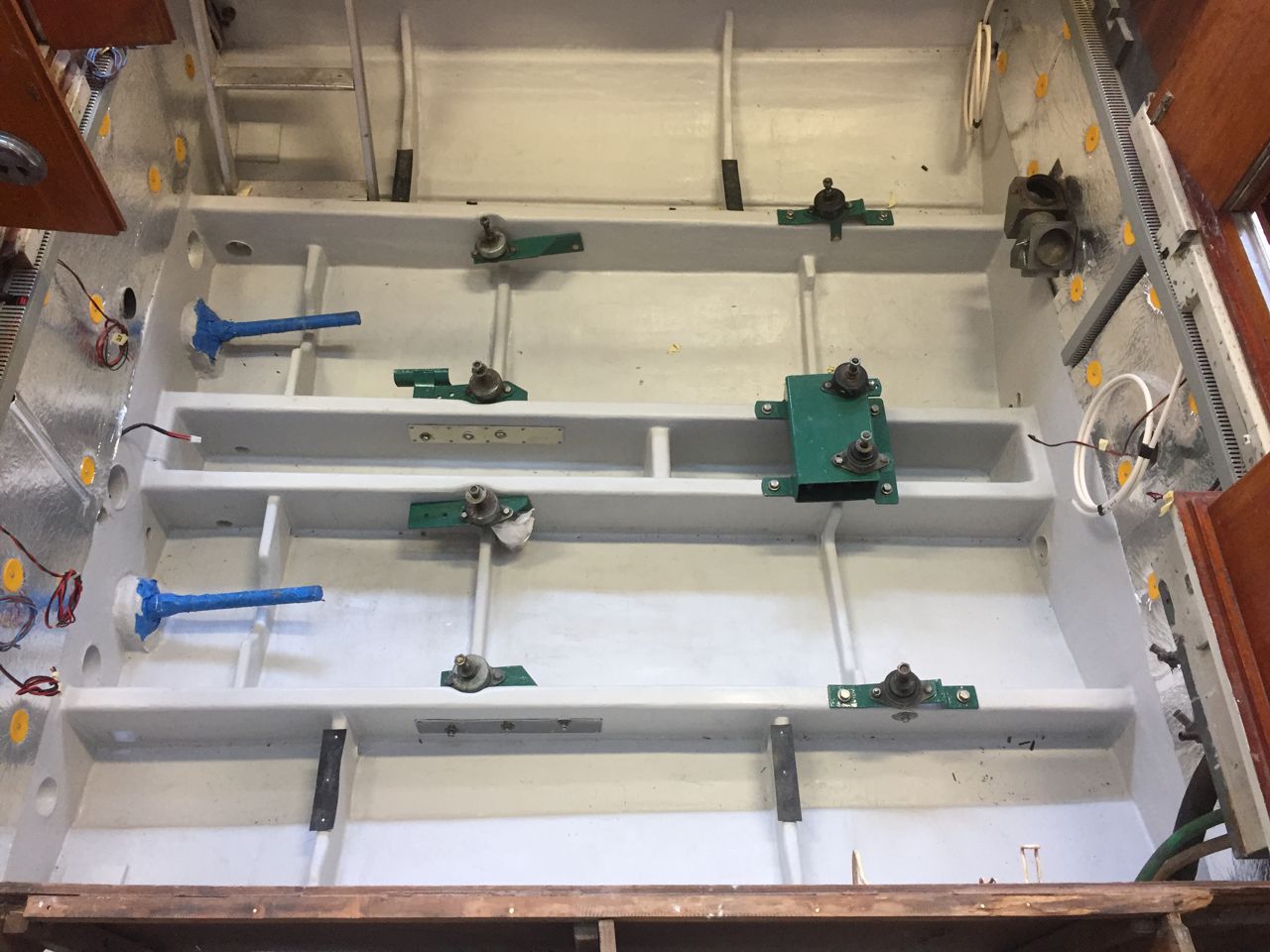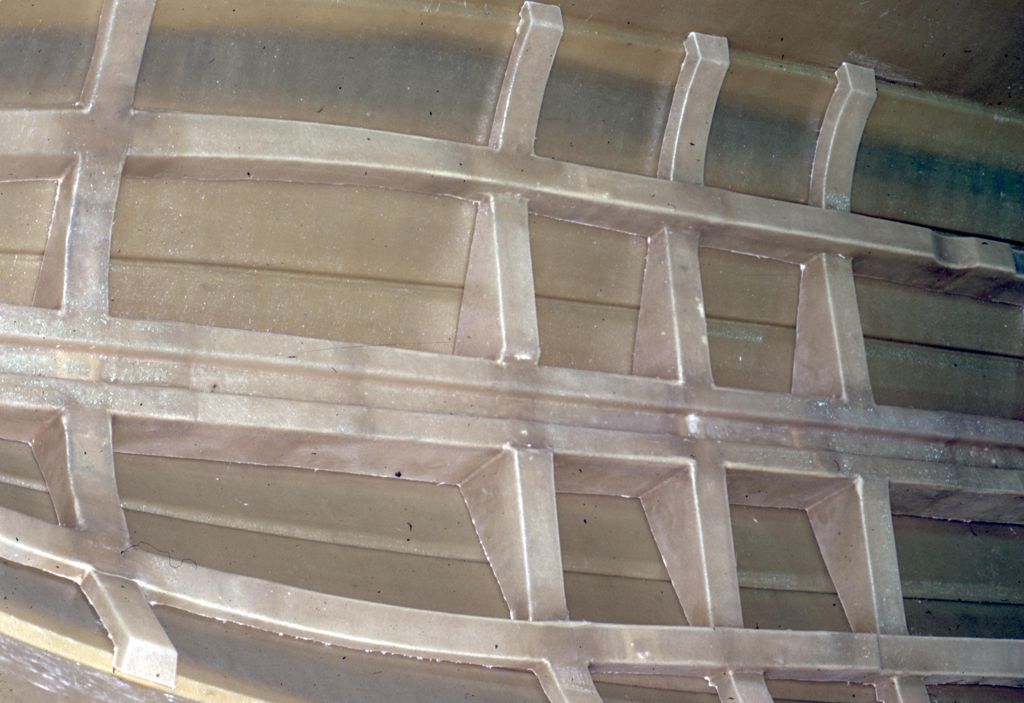

Technical Data | |
| Production period | 1966-1975 1975-1988 - Facelifted version |
| L.o.a. [m] | 10.35 |
| Beam [m] | 3.20 |
| Draft [m] | 1.10 |
| Height above waterline [m] | 3.15 - incl. mast |
| Freeboard front [m] | 1.16 |
| Freeboard aft [m] | 0.95 |
| Displacement [t] | 5.00 - 7.00 |
| Fuel [l] | 2 x 300 (-1972) 2 x 500 (1972-1974) 2 x 520 |
| Water [l] | 160 (-1972) 2 x 140 (1972-1974) 2 x 165 (1975-) |
| Voltage [V] | 12/24 |
| Hull | Mahogany (-1978) GRP (1968-) |
| Number of boats | 802 |
| Designer | Einar Runius (Hull) Winfried H. Wilke (Design) |

|

|
Photos and images |
|||||||||||||||||
|
| Engines | Ford 2704ET | Ford 2714E | Chrysler 225LM318BW | Perkins 6.354 M | Perkins T6.354 M | Perkins T6.354 M | Thornycroft T 345 | Volvo Penta MD27 | Volvo Penta BB100A | Volvo Penta MD29 | |
| Production | 1963-1966 | 1963-1969 * | 1967-1970 * | ||||||||
| Fuel | Diesel | Diesel | Diesel | Diesel | Diesel | Diesel | Diesel | Diesel | Petrol/Gasoline | Diesel | |
| Stroke | 4 | 4 | 4 | 4 | 4 | 4 | 4 | 4 | 4 | 4 | |
| No. of cylinders | 6 | 6 | 8 | 6 | 6 | 6 | 6 | 6 | 4 | 6 | |
| Bore | [mm] | 105.00 | 107.00 | 99.30 | 98.40 | 98.40 | 98.40 | 98.00 | 85.00 | 84.14 | 88.00 |
| Stroke | [mm] | 115 | 115 | 84 | 127 | 127 | 127 | 125 | 80 | 80 | 80 |
| Compression ratio | 14.7:1 | 16.0:1 | 8.5:1 | 16.0:1 | 15.5:1 | 15.5:1 | 16.8:1 | 21.0:1 | 10.0:1 | 21.0:1 | |
| Displacement | [l] | 5.95 | 6.22 | 5.20 | 5.80 | 5.80 | 5.80 | 5.66 | 2.72 | 1.78 | 2.92 |
| Torque | [Nm] | ||||||||||
| Engine output | [kw/(HP)] | 119 - 132/ (162 - 180) | 68 - 77/ (93 - 105) | 136/(185) | 85/(115) | 107/(145) | 129/(175) | 71 - 83/ (97 - 113) | 42 - 61/ (57 - 83) | 46 - 74/ (63 - 100) | 49 - 68/ (67 - 92) |
| Rotations | [1/min] | 2450 | 2500 | 4000 | 2800 | 2400 | 2400 | 2500 | 4500 | 3000-5000 | 3000-4000 |
| Weight | [kg] | 617 **** | 315 | 315 | |||||||
| Engines | Volvo Penta BB170A | Volvo Penta MD32A | Volvo Penta TAMD60A | Volvo Penta TMD40A | Volvo Penta TAMD60B | Perkins 4.236 M | Volvo Penta TAMD40A | Volvo Penta TAMD40B | Volvo Penta TAMD60C | Volvo Penta TAMD41A | |
| Production | 1969-1972 | 1970-1977 | 1976-1978 | 1976-1985 | 1978-1983 | 1978-1990 | 1980-1985 | 1983-1986 | 1983-1987 | 1986-1989 | |
| Fuel | Petrol/Gasoline | Diesel | Diesel | Diesel | Diesel | Diesel | Diesel | Diesel | Diesel | Diesel | |
| Stroke | 4 | 4 | 4 | 4 | 4 | 4 | 4 | 4 | 4 | 4 | |
| No. of cylinders | 6 | 6 | 6 | 6 | 6 | 4 | 6 | 6 | 6 | 6 | |
| Bore | [mm] | 88.90 | 90.00 | 98.43 | 92.00 | 98.43 | 98.40 | 92.00 | 92.00 | 98.43 | 92.00 |
| Stroke | [mm] | 80 | 83 | 120 | 90 | 120 | 127 | 90 | 90 | 120 | 90 |
| Compression ratio | 9.5:1 | 22.1:1 | 16.0:1 | 21.0:1 | 16.0:1 | 16.0:1 | 21.0:1 | 21.0:1 | 16.0:1 | 16.0:1 | |
| Displacement | [l] | 2.98 | 3.17 | 5.48 | 3.59 | 5.48 | 3.66 | 3.59 | 3.59 | 5.48 | 3.59 |
| Torque | [Nm] | 625 | |||||||||
| Engine output | [kw/(HP)] | 125/(170) | 57 - 78/ (78 - 106) | 89 - 147/ (121 - 200) | 91/(124) *** | 103 - 169/ (140 - 230) | 53/(72) | 81 - 109/ (110 - 148) *** | 116/(158) *** | 112 - 184/ (152 - 250) | 147/(200) |
| Rotations | [1/min] | 5000 | 4000 | 1800-2800 | 3000-3600 | 1800-2800 | 2500 | 3000-3600 | 3600 | 1600-2800 | 3800 |
| Weight | [kg] | 290 | 395 | 750 | 440 | 750 | 485 | 475 | 680 **** | 465 | |
| Engines | Engine output [kw/(HP)] |
| Ford 2704ET | 119 - 132/ (162 - 180) |
| Ford 2714E | 68 - 77/ (93 - 105) |
| Chrysler 225LM318BW | 136/(185) |
| Perkins 6.354 M | 85/(115) |
| Perkins T6.354 M | 107/(145) |
| Perkins T6.354 M | 129/(175) |
| Thornycroft T 345 | 71 - 83/ (97 - 113) |
| Volvo Penta MD27 | 42 - 61/ (57 - 83) |
| Volvo Penta BB100A | 46 - 74/ (63 - 100) |
| Volvo Penta MD29 | 49 - 68/ (67 - 92) |
| Volvo Penta BB170A | 125/(170) |
| Volvo Penta MD32A | 57 - 78/ (78 - 106) |
| Volvo Penta TAMD60A | 89 - 147/ (121 - 200) |
| Volvo Penta TMD40A | 91/(124) *** |
| Volvo Penta TAMD60B | 103 - 169/ (140 - 230) |
| Perkins 4.236 M | 53/(72) |
| Volvo Penta TAMD40A | 81 - 109/ (110 - 148) *** |
| Volvo Penta TAMD40B | 116/(158) *** |
| Volvo Penta TAMD60C | 112 - 184/ (152 - 250) |
| Volvo Penta TAMD41A | 147/(200) |
| * All variants of this engine |
| *** Power at the propeller shaft |
| **** Weight without gearbox |
|
|||||||||||||||